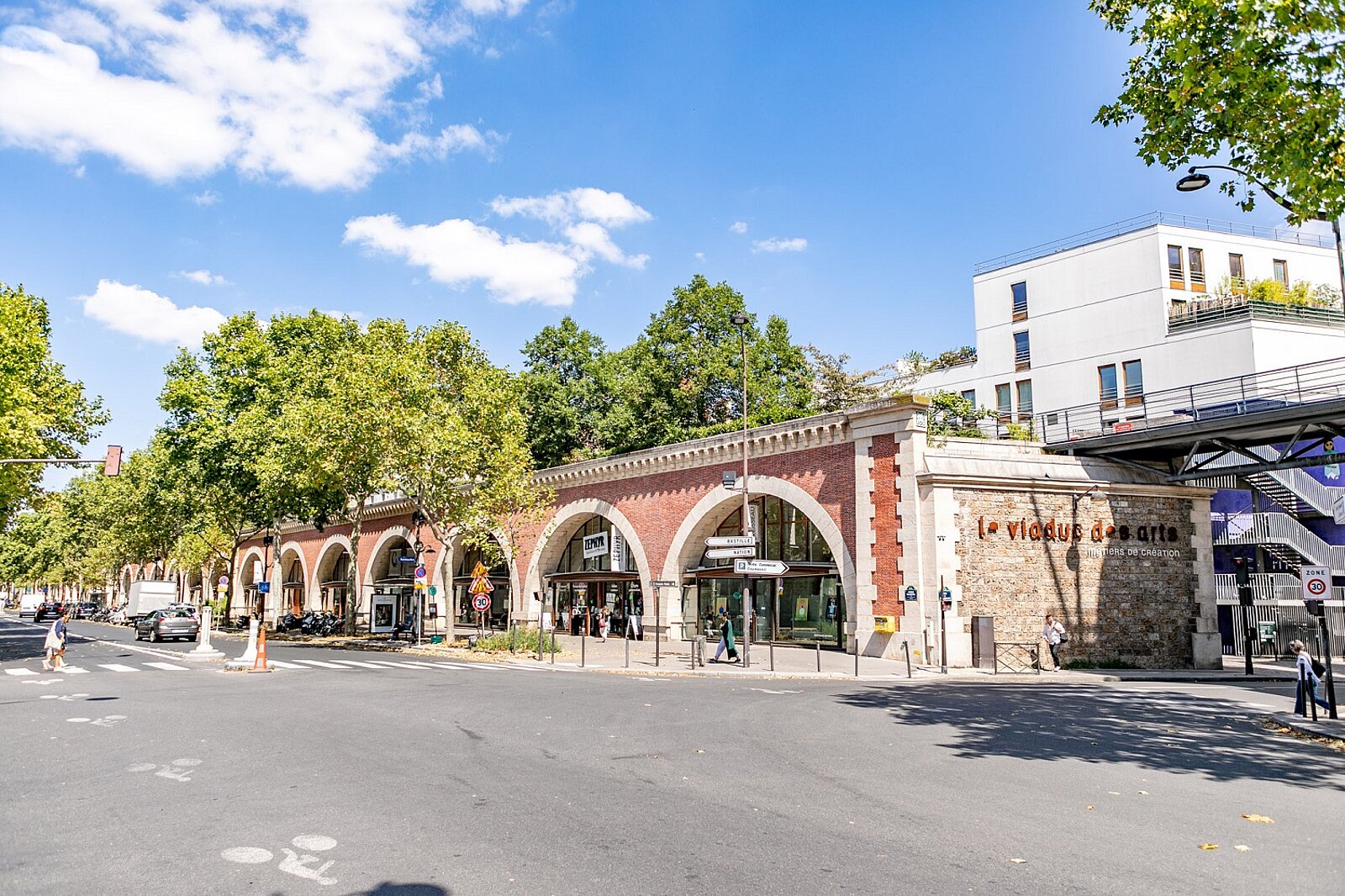The lives of the Viaduc des Arts, when Paris reinvents itself

The viaduct is a work of art. Before paying homage to it by welcoming the craftsmen who make up France's prestige in terms of arts and crafts, the Viaduct bore another name and supported a train line.
A viaduct to link the capital
The Viaduc des Arts, before transporting the imagination of walkers, carried passengers who crossed Paris from the east. At that time, it was called the Bastille Viaduct. This one and a half kilometre long viaduct was then a railway bridge. The bridge was built by Emile Vuigner and Albert Bassompierre-Sewrin in the east of Paris in 1859, the date of its inauguration. This structure enabled millions of people to reach the capital from the eastern suburbs.
At the time, it enabled the Vincennes line to link the old Bastille station (destroyed in 1984 before the construction of the Bastille Opera House) with the La Varenne station in Saint-Maur-des-Fossés in the Val de Marne. Thus the Paris/Bastille-Varenne railway line functioned as a traffic artery for the inhabitants of Paris and the suburbs, before the poetic viaduct gave way to the prosaic RER A in the 1970s.
A viaduct to discover the capital and its craftsmen
It was in the early 1980s that the Bastille viaduct was reborn, and in a beautiful way, by becoming the showcase for the City of Paris' arts and crafts. It took ten years to rehabilitate the structure, transform it, magnify it and dedicate new functions to it. The architect Patrick Berger worked to forge a new destiny for this emblematic Parisian walkway.
In 1986, the Paris City Council decided to buy the abandoned structure and launch a rehabilitation project. The viaduct was transformed from a passageway into a place of life. The old railway line was converted into a planted promenade, while the lower part of the bridge, made up of vaults in pink brick and cut stone, was restored. Patrick Berger closes each of the vaults with large glass windows: the bridge's base will now be able to house workshops, showcases for the world of crafts, art and design.
From a functional role to an artistic lung for Paris
At its origins, the Bastille Viaduct served the urban planning of Paris anonymously and without being looked at. More than a century later, the transformation of this path, this route, into something completely different in the eyes of Parisians. By changing its skin, its name and its function, the Viaduc de Bastille, which has become the Viaduc des Arts, has become a creative and artistic path that charms by the gardens it carries on its back and seduces by the craftsmen it houses. The rehabilitation process of the Viaduc des Arts and its neighbourhood represents the potential of urban renewal. The Viaduc des Arts has become an aesthetic solution for a space, an apparently obsolete structure dating from the period of Parisian industrialisation.
What a transformation! What a life for an engineering structure! What a reinvention of this railway line that has become a figure of Parisian craftsmanship! Each vault is a place of expression of excellent know-how but also a production, presentation and sales workshop. And from being functional, the viaduct has become consubstantial with Parisian aesthetics; what a destiny!
Viaduc des arts (1-129 avenue Daumesnil, 75012 Paris)
Paris celebrates 100 years of artisanal excellence! July 202515, 73 et 111 avenue Daumesnil, 75012 Paris
Maison Tassin has moved into the Viaduc des arts May 2025111 avenue Daumesnil, Paris 12
A day in time, where the art of costume meets photography February 202569 avenue Daumesnil, Paris 12
The Viaduc des arts is celebrating this December: discover the program December 20241-129 avenue Daumesnil, Paris 12
Cécile et Jeanne, jewellery creation since 1990 November 202449 avenue Daumesnil, Paris 12
At La Fabrique nomade, refugee artisans reconnect with their craft November 20241bis avenue Daumesnil, Paris 12
Estampille 52, high-end cabinetry November 202491 avenue Daumesnil, Paris 12
Serge Amoruso, high-end leather goods at heart October 202437 avenue Daumesnil, Paris 12


